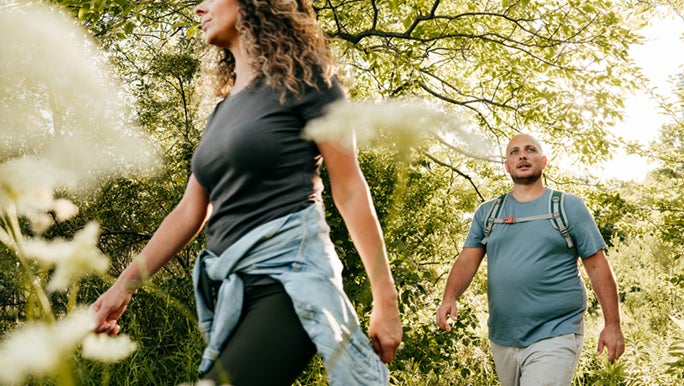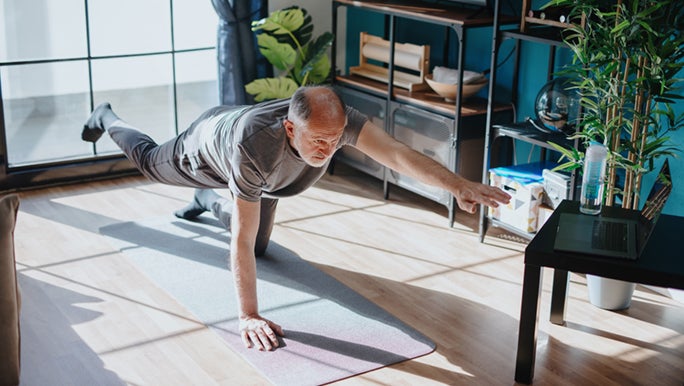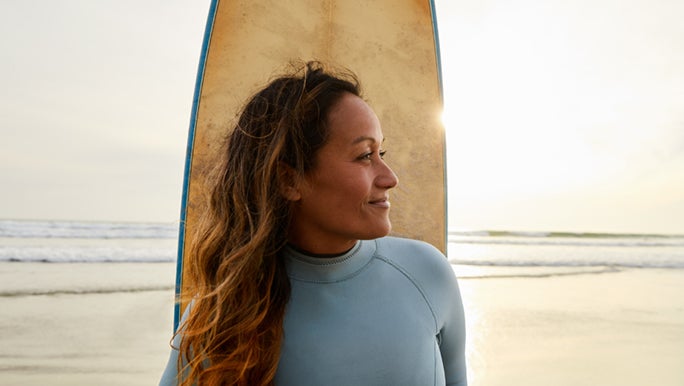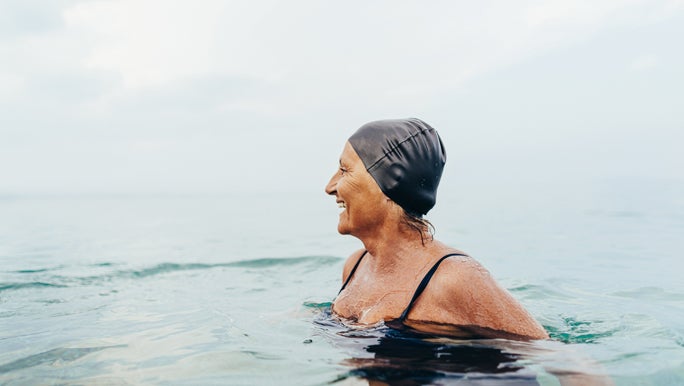It’s not news that our bodies gradually change and slow down as we get older. But even if running like a 20-year-old has been off the cards for a while, we all still need to keep moving.
Staying fit is important at any age, but physical fitness gets more important, not less, as we get older. So we asked Physiotherapist Brad McIntosh about why exercise is so important for older adults, and what kinds of exercise we should all focus on doing as we age.
Just a note before you read on: you should always consult your GP and physiotherapist before starting any new exercise program.
How our fitness levels change as we get older
No matter how much exercise we do, our fitness levels decline to some extent as we age. That’s due in part to natural changes in our bodies as we grow older. For example:
- our metabolisms slow down
- we lose aerobic fitness
- we lose muscle mass (as much as 3-8% per year after age 30)
- our reflexes grow less sharp
- our sense of balance changes
- our joints get stiffer and less flexible
The good news, Brad says, is that we can slow down and even reverse many of these changes by staying active and getting enough exercise as we grow older.

To protect against the effects of getting older, any fitness program should include each of the four main types of exercise. Aerobic, balance, strength and flexibility.
The 4 types of exercise that older adults need
Brad says that to protect against the effects of getting older, any fitness program should include each of the four main types of exercise.
1. Aerobic
“Aerobic exercise refers to movement that requires your body to produce energy using oxygen,” says Brad. “It helps to keep your heart and lungs healthy, and increases your endurance.”
Walking is the most popular and easiest form of aerobic exercise for everyone, regardless of age, Brad adds. “Brisk walking is better for your health, but any walking has benefits. So, brisk or not, I’d encourage people to walk more as they get older.”
Additionally, he comments, there are plenty of other ways to increase your aerobic activity, including:
- swimming
- jogging
- cycling
- dancing
- simply marching on the spot

If your sense of balance is fairly good right now, maintain it by incorporating exercise forms that require you to balance such as yoga or dance.
2. Balance
Staying inactive as you age tends to result in poorer balance and weaker muscles, which can – over time – make you feel unsteady on your feet. This can then create a vicious cycle, where you’re less active because you’re unsteady, and you become more unsteady because you’re less active.
If your sense of balance is fairly good right now, maintain it by incorporating exercise forms that require you to balance such as yoga or dance.
Or, if you’ve already noticed gradual changes in your balance, Brad says, don’t ignore them. Instead, speak to your physiotherapist or personal trainer about a program of safe balance exercises. These might include:
- standing on one foot
- walking heel to toe, with your eyes open or closed
- focusing on joint flexibility by walking on uneven surfaces
- strengthening leg muscles with exercises such as squats and leg lifts.
Make sure you get the proper training before trying any of these exercises at home.
3. Strength
Strength training isn’t just about bulking up in the gym, says Brad. We reach our peak bone mass somewhere between age 25-30. After that, we can lose anywhere between 3-11% of our bone mass each decade.
Including strength training in our fitness programs as we get older can help us to reverse both that bone loss, and the muscle loss we talked about earlier. It means that when we become seniors, we’ll be far healthier and more mobile.
Brad comments that, in addition to keeping us healthy, strength training can be functional, helping us to do everyday things like carrying groceries.
And if you’re worried about sore muscles, he says that, “good nutrition and hydration before, during and after exercise will help.”
4. Flexibility
As we age, our muscles and tendons shorten and become less flexible. This increases our risk of muscle cramps, damage and strains, as well as joint pain. It also makes it harder to do regular activities such as bending down.
Once again, though, the right exercise program can help to minimise this loss of flexibility. Brad says that warming up before exercising is important because, “it prepares your body and mind for exercise and helps to prevent injuries.”
He adds that it’s best to warm up your muscles with a variety of dynamic and static stretches to gently increase your ability to move.
Additionally, you might benefit from adding some yoga, dance or other types of stretching classes into your weekly exercise routine.

Keeping physically fit as you age is essential to leading a happy and healthy life all the way into your senior years.
The right exercise plan is essential as people get older
Once you get the OK from your GP, ask your physiotherapist or personal trainer to create a fun fitness plan that includes exercises from each of the four categories above.
Then, once you have it, Brad says, start slowly and build up steadily. “The more you move, the better you’ll feel.”
Keeping physically fit as you age is essential to leading a happy and healthy life all the way into your senior years.
Related:
Brad McIntosh is a highly-trained and well-regarded physiotherapist with a particular clinical and research interest in knee rehabilitation.
Reviewed by the healthylife Advisory Board June 2021



